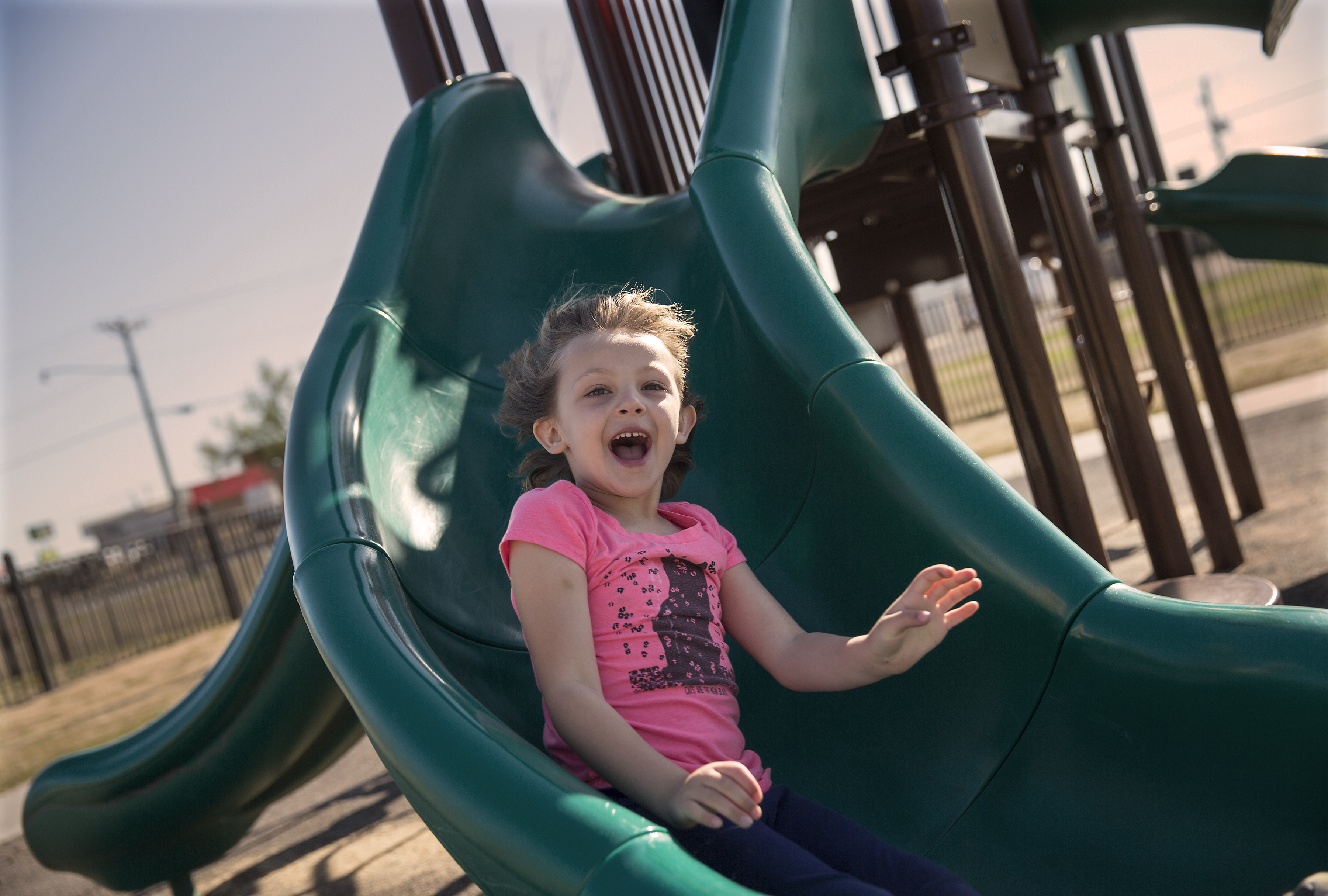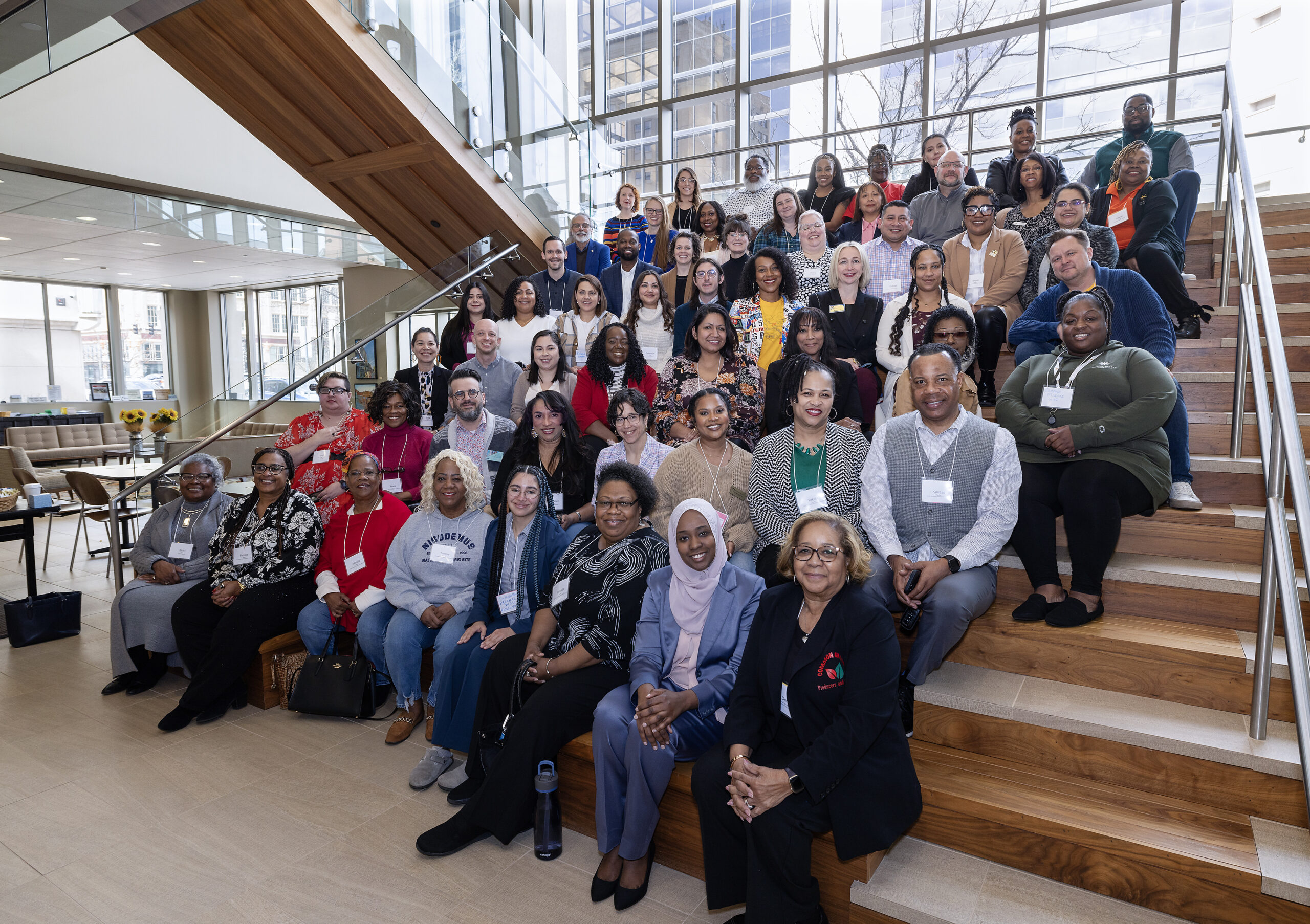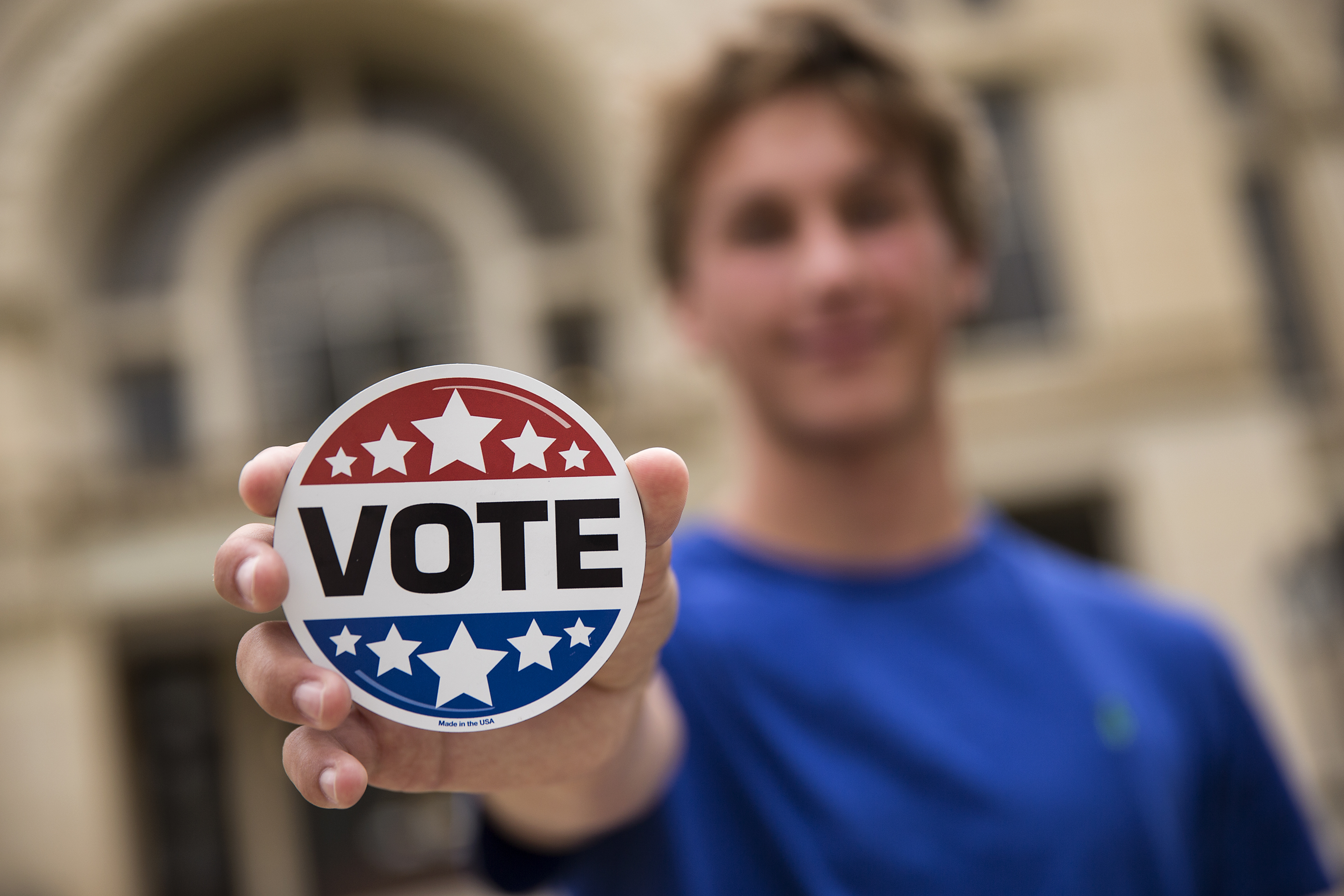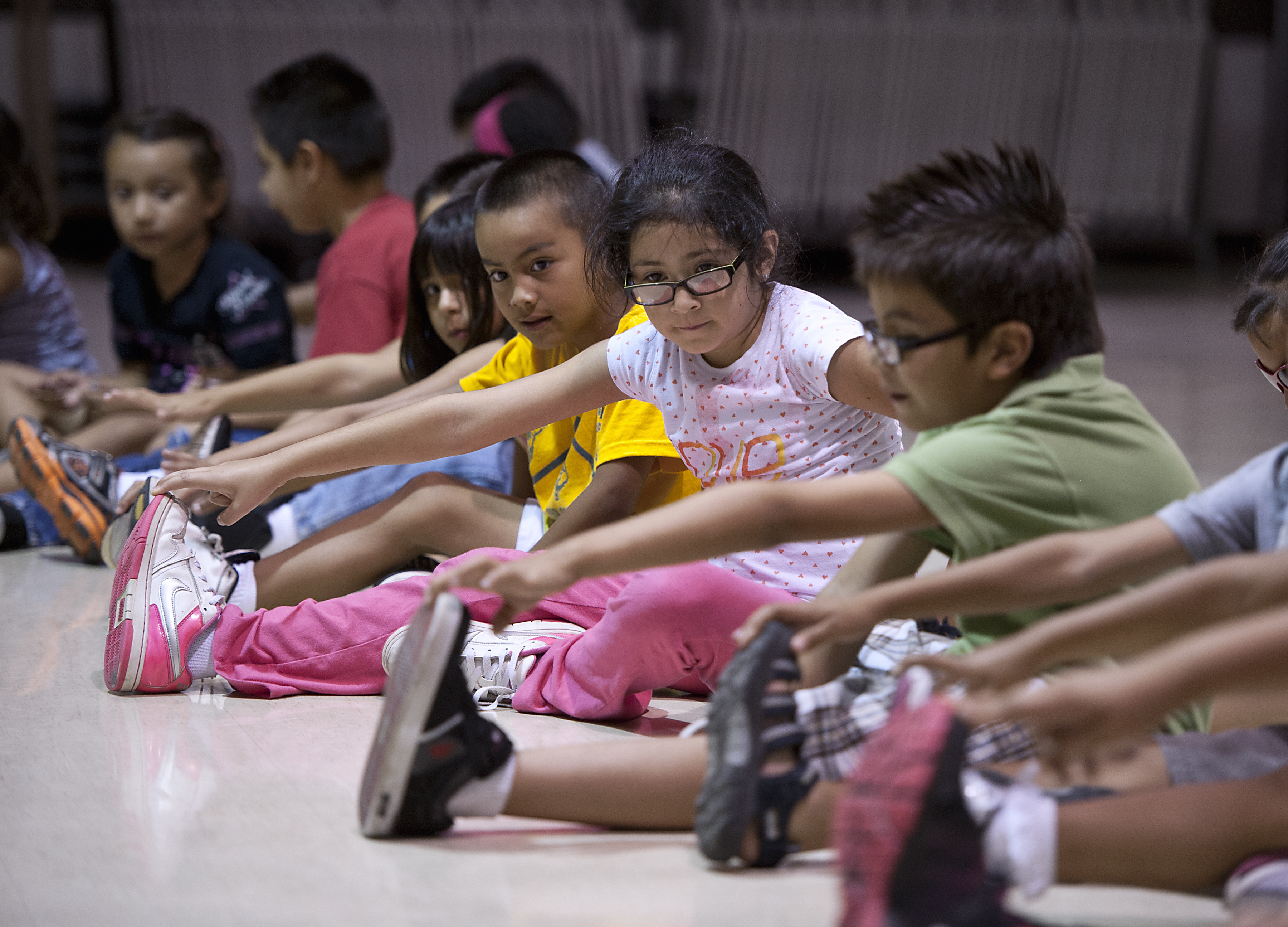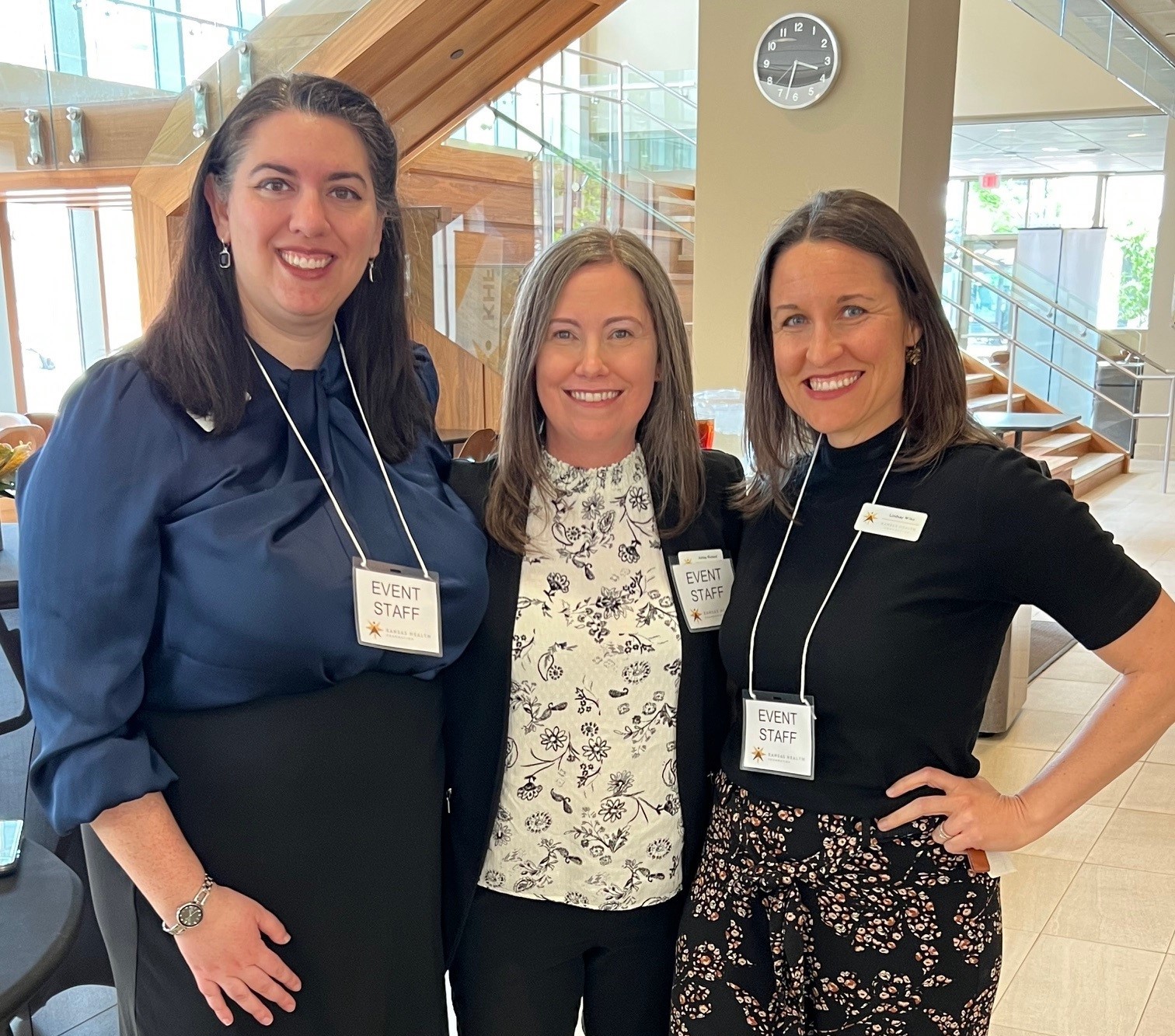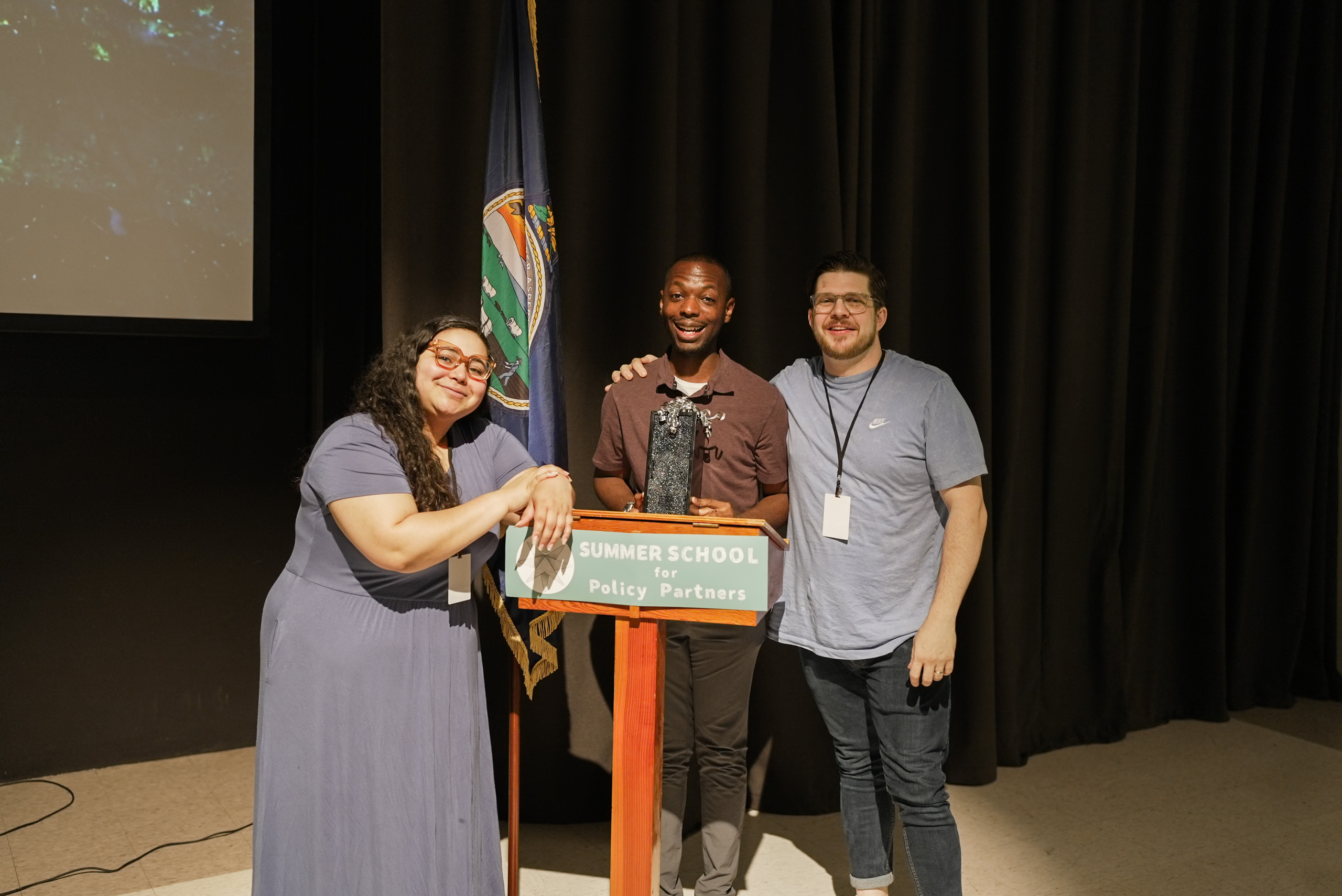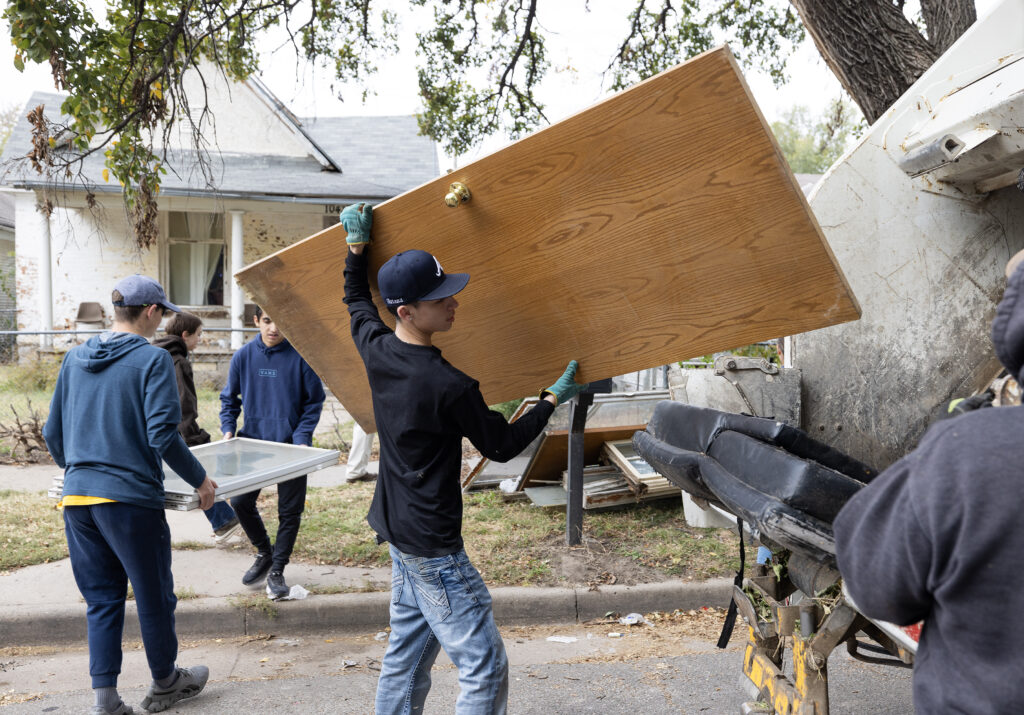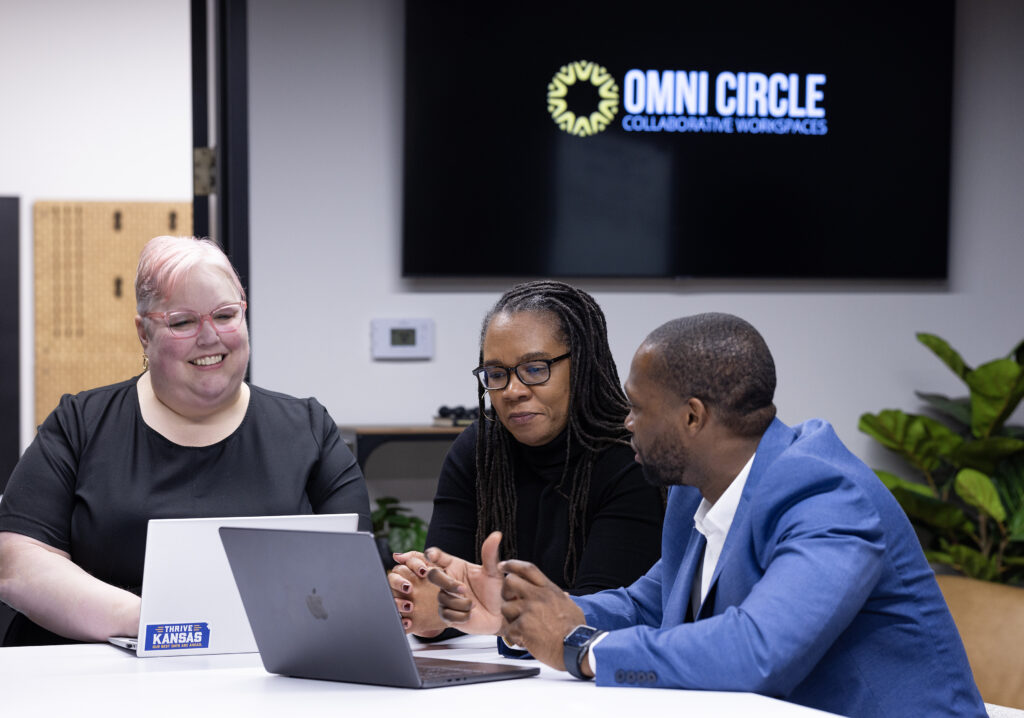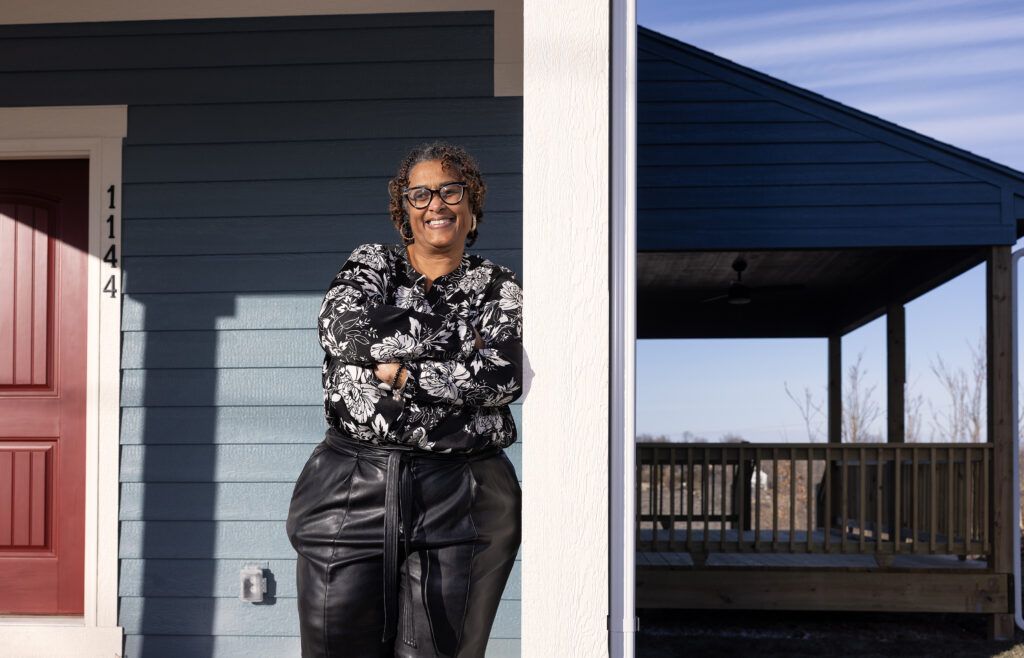This article is part of an ongoing series to chronicle the work of the 30 organizations involved in KHF’s Building Power and Equity Partnership (BPEP) initiative. To learn more about BPEP, click here.
“Do you resonate with joy and abundance?”
That question was posed in the job description Aileen Rueda-DaCosta read three years ago when she applied for work with The Neighboring Movement. The job she was applying for? Storyteller. Three years later, Rueda-DaCosta was promoted to associate director, her fast but organic move to that position mirroring the growth of the organization itself.
Since its 2015 founding, The Neighboring Movement has grown from what Rueda-DaCosta called “a rag-tag, tiny nonprofit” trying to make its immediate neighborhood less dangerous to its current status as a muscular organization helping people throughout Kansas use their own skills to build better communities. Along the way, it has turned around many lives in the troubled south central, or SoCe, neighborhood bounded by Kellogg, Washington, Pawnee, and the Arkansas River.
Living Out Our Faith
The nonprofit’s executive director, Adam Barlow-Thompson, who is an ordained minister, said he founded The Neighboring Movement (along with his wife, Ashley, and Catherine and Matt Johnson) as a way to “live out our faith” in their neighborhood. It began through “organic networks of care between neighbors,” but in seeking to strengthen their work they discovered a concept called “asset-based community development,” or ABCD, which begins with a premise that every community has members who are gifted and have things to offer. By finding and encouraging those skills, the neighborhood can grow stronger from the inside out. When neighbors know each other, people feel safer, individual and community health increases, people can live out their lives at home longer, and kids do better in school.
From its initial efforts as a “tiny” group, The Neighboring Movement supported and added to projects like hosting neighborhood get-togethers, organizing alley cleanups, serving as “welcomers” to new neighbors, starting clubs (dog walking, chess playing), and participating in the Funstun Community Garden. The early programs are often managed by “little, tiny” teams of a few individuals.
The nonprofit saw a sharp spurt of growth in 2020 — assisted by a bit of serendipity out of that challenging year of the pandemic. A friend had contacted Barlow-Thompson about an opportunity from a funding source who had to cancel a program due to Covid. “We quickly put something together and it just took off and is now one of our leading programs,” he said.
The Animator Network and Beyond
That program is the Animator Network, which trains “animators” on how to sustainably build communities using the ABCD model. Animators find, connect with, mobilize, and work with “assets” — people. They commit to five hours of training per week and, crucially, are paid for their time.
After their 12-week training phase, animators can choose to continue by developing their own community projects, or “cohorts.” The longevity of these projects depends on their goals, but animators receive support and are paid throughout this process as well. The payment ensures not only that those committing will be fairly compensated for their time but also — since they must apply for project approval and complete protocols — that The Neighboring Movement will receive the benefits offered by those best trained for the work.
“The Community Animator Network (Animators) program is structured to foster connections and trust within the community using a step-by-step guide,” said Kansas Health Foundation Director of Community Partnerships Valerie Black-Turner, who worked closely with The Neighboring Movement. “The model enables animators to initiate learning conversations, exercise deep listening, and identify community trends and patterns. Animators then use a tool, ReCycle, developed by The Neighboring Movement, that empowers them to outline a measurable action or mini experiment they can implement based on the information they receive during their ‘learning conversations.’”
The Neighboring Movement began Animator Network locally, but currently more than 100 people throughout the state have gone through the program, with concentrations in Wichita, Wyandotte County, and southwest Kansas.
In 2023, The Neighboring Movement took another big leap into property acquisition, buying four abandoned buildings in SoCe at Broadway and Lincoln. It partnered with Fidelity Bank President Aaron Bastian to begin a $1.2 million renovation project with the aim of remaking the area into a self-sustaining commercial center featuring shops, restaurants, an artist collective, and apartments. “SoCe Corner” not only will strengthen the SoCe neighborhood but also will contribute to city efforts to revitalize its neighbor to the north — downtown Wichita.
But throughout all this growth and power, that joy that first called out to Rueda-DaCosta, who joined the staff of another non-profit in late 2024 but continues to support The Neighboring Movement’s work, is still at the heart of this organization, whose mission statement includes the promise that its work “will be a liberating and justice-seeking effort of joy, relationship, and abundance for all people.”
Rueda-DaCosta’s involvement in The Neighboring Movement came about through another unexpected upturn from the Covid year. She graduated from Wichita State University in 2020 — “when we were in lockdown,” she said. “Our graduation ceremony was a PowerPoint slide. It was the same week I had my first baby. Everything I had known was over.”
She decided to be a full-time parent but began exploring additional options, including studying photojournalism at WSU with a former newspaper photographer and gifted teacher. That new skill “morphed into event photography for nonprofits, which was my introduction into the nonprofit world.”
When she responded to The Neighboring Movement’s 2021 job posting asking about joy and abundance, she wrote a letter that included links to her portfolio. “Adam said, ‘Great. You need a resume.’” Then he promptly hired her.
Craving Connections
Alexandra Brewer, also a photographer, met Barlow-Thompson shortly after she had had a spiritual trauma and subsequent crisis of faith. He was speaking on a podcast, and “I remember getting chills listening to him talk about The Neighboring Movement,” she said. “It was the first time in a decade that I lit up in that spot in my heart where faith used to be.”
She volunteered free photography services, and that first step quickly led to more involvement. She completed the first faith-based animator cohort the Neighboring Movement offered.
Brewer and her young daughters had had two break-ins in two different homes, with one of the thieves threatening to kill her. They moved twice seeking safety and, after finding a place, stayed isolated and worked on healing for the first two years there.
“I was completely terrified of other humans at that point,” Brewer said. “Neighboring felt counter-intuitive to keeping myself safe, when in reality it was an amazing way to effectively establish safety. We all know and help each other now, and I know I have people all around me to call if we are in trouble.”
Among the targets outlined in Brewer’s cohort was the “eight-door challenge,” in which animators met with the people behind that number of doors closest to them and then hosted a gathering. Differences among her neighbors — religion, gender, and more — made “the perfect recipe for misconceptions about each other.” But at her gathering, she and the 11 neighbors who attended discovered they were “surrounded by wonderful people” with a lot in common. The goal in her future gatherings is to foster and expand those relationships.
“We focus on what is strong instead of what is wrong,” she said, building on the strengths and resources right within their neighborhood. One neighbor with a large inventory of lawn equipment, for example, “very eagerly offered” its availability to others. “So now if anyone gets hurt or can’t access lawn care, we know we all have access to a mower as well as people who can do it for us.”
At the gathering she had dreaded hosting, Brewer discovered what everybody had in common. “We were all craving connection and too afraid to reach for it.”
Combatting Negative with Positive
Karen Kasten has lived in SoCe for 30 years. Although she had been aware of The Neighboring Movement for most of its existence, she didn’t become involved until 2022, when she noticed “unsavory activity” at Lincoln Park, which was across the street from her house. She called their community police officer and asked what was being done about it, and he suggested ways the neighbors could use the park to discourage troublemaking.
“I see the value in combatting negative activity with positive,” she said, so she contacted The Neighboring Movement and learned about the animator program. “I had been searching for a volunteer opportunity that wasn’t the run-of-the-mill church or other organized-group outreach, and this activity — in this neighborhood where I had raised my children, and where my grandchildren have visited—was the perfect fit.”
From the neighbors and businesses that Kasten asked to participate in her Lincoln Park project, she got “more offers of help and involvement than apathy. There are people out there just waiting for an invitation to get involved.” She has had challenges. This summer she successfully held monthly park events from May to August. “The September event fell apart with all kinds of obstacles,” she said. “But that is okay. I am learning as I go.”
The Neighboring Movement has helped her “every step of the way” — especially with social media — and continues to meet with her for her latest project, a Safety Summit to grow her neighborhood’s ABCD program into surrounding blocks. Her work “keeps me young, as I have relied on staff to help me design flyers and see things from a ‘more hip’ prospective,” she said.
“I hope to live to see the day that this neighborhood is just as safe and inviting as other neighborhoods in Wichita.”
Kansas Health Foundation: Long-term Commitment
Barlow-Thompson said the Kansas Health Foundation has “always been a trusted partner,” one that his organization has had a relationship with for a long time. He noted that the foundation recognizes the generational change being sought — and the innovation and failing forward that goes with it. The key strength of KHF’s Building Power and Equity program is “the long-term commitment” that it offers, making it possible for his organization to plan and budget strategically.
“And we have the same vision for the community” that KHF has, he said. “We want to improve health. The Kansas Health Foundation understands that health is more than just seeing your doctor, and that when you create strong communities at the neighborhood level, that does the heavy lifting.”
Rueda-DaCosta cited KHF’s overwhelming commitment as a partner with the organization, noting specifically the help from Director of Community Partnerships Valerie Black-Turner. “She contributed to the positive cohort experience that KHF intentionally created where we got to know other nonprofits in the partnership,” she said. “People shared valuable life experiences that they didn’t have to share. I gained a mentor. She was so committed, cared so much, was a champion for us. She made regular check-ins and was a delight to work with. I feel very lucky that we got her.”
Moving Forward
The organization’s SoCe Corner development project is progressing on target. “God willing, we will start construction in January and occupancy of new businesses in late summer” of 2025, Barlow-Thompson said. “The artist collective is open and being marketed at SoCeCollective.org.” And the statewide program continues, along with the many cohort projects involving new and repeat animators.
Barlow-Thompson’s initial effort to “live out our faith” appears to have proved a winning one. Nearly a decade in, The Neighboring Movement has flourished into what Rueda-DaCosta described as a “well-oiled machine.” Its co-founder and executive director described their current phase as being at a second point in time where they had grown and then plateaued — a moment where what followed would either be another spurt of growth or the beginning of a decline.
“We’re at another place now where we’re trying to grow into the next level of maturity,” he said. “What that means is making sure the structure is in place to ensure that we can handle the kind of growth that we have the potential to reach.”
The questions he is asking now are, “How do you provide benefits for your employees? How does your board oversee a larger organization? Is there a fundraising system, instead of just ‘being friends with Adam’”?
Despite Barlow-Thompson’s fiscal concerns about reliance on more than friendship, that quality appears to be an occupational hazard at The Neighboring Movement.
“What I enjoy most about all this is the new friends I have made that are there to help and support each other,” said Kasten.
Brewer said, “The Neighboring Movement allows people to reach an extended arm to a neighbor—and by doing so, it is bringing a whole lot of love to neighborhoods around Wichita.”
“The people” are also what Rueda-DaCosta most enjoyed about her job. “They each have a heart for service and want to make the world a better place through small and doable steps. When things felt hard, I just got more connected with the people in our network, and it just grew from there.”
###

